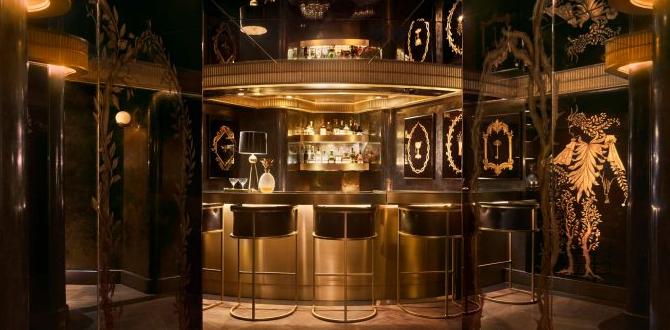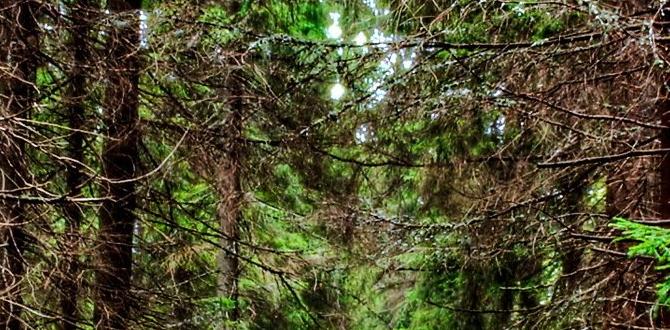Your 2-week Basque Country itinerary is here! Discover a balanced trip featuring vibrant cities, stunning coastlines, and delicious food, with practical tips for smooth travel to make your journey effortless and enjoyable.
The Basque Country is a place of rich traditions, unique landscapes, and incredible flavors. Planning a two-week adventure there can seem a bit daunting, especially if it’s your first time. You want to see the best sights, eat the tastiest pintxos, and experience the culture without feeling rushed or overwhelmed. The good news is that with a well-thought-out plan, your Basque journey can be a dream come true. We’ve put together a guide to help you craft an unforgettable 2-week itinerary. Get ready to explore!
—
Your Essential Basque Country 2 Weeks Itinerary
This itinerary is designed to give you a taste of everything the Basque Country has to offer, from its bustling cities to its charming coastal towns and breathtaking nature. We’ve balanced popular highlights with hidden gems, ensuring you experience the true heart of this unique region. It’s flexible, so feel free to adjust it based on your interests and pace.
Week 1: Cities, Culture & Coastline
Days 1-3: Bilbao – Modern Art & Industrial Charm
Your Basque adventure begins in Bilbao, a city that has transformed itself from an industrial hub into a cultural powerhouse. It’s the perfect introduction to the region’s innovative spirit.
Arrive in Bilbao: Settle into your accommodation. Bilbao Airport (BIO) is well-connected.
Guggenheim Museum: This is a must-see. Admire Frank Gehry’s architectural masterpiece and its impressive collection of modern and contemporary art.
Casco Viejo (Old Town): Wander through the charming Seven Streets, Lisbon’s historic heart. Discover narrow alleys, beautiful plazas, and traditional pintxos bars.
Mercado de la Ribera: Explore one of Europe’s largest indoor markets. Sample local produce, cheeses, and freshly prepared tapas.
Day Trip to San Juan de Gaztelugatxe: A stunning hermitage perched on a rocky islet, connected by a stone staircase. Famous from “Game of Thrones” filming locations. Public transport options are available, or consider a guided tour for ease.
Euskal Museoa (Basque Museum): Learn about the history and culture of the Basque people.
Bilbao’s transformation is a great example of urban regeneration. For more on how cities are reinventing themselves, explore resources from organizations like the Urban Institute, which studies urban development and community revitalization.
Days 4-6: San Sebastián – Culinary Capital & Golden Beaches
Next, head east to San Sebastián (Donostia), renowned globally for its gastronomy and stunning crescent-shaped beach, La Concha.
Travel to San Sebastián: Easy train or bus journey from Bilbao (approx. 1.5 hours).
La Concha Beach: Relax, stroll, or swim at this iconic urban beach. It’s incredibly picturesque and perfect for a leisurely afternoon.
Pintxos Hopping in the Old Town: This is the highlight for many! Explore the narrow streets of Parte Vieja and indulge in creative pintxos (small snacks, often served on bread) at various bars. It’s an essential Basque experience.
Monte Urgull & Monte Igueldo: Hike up these hills for panoramic views of the city, bay, and coastline. Monte Igueldo also features a charming vintage amusement park.
Parte Vieja (Old Part): Beyond pintxos, explore historic churches like San Vicente, and the Plaza de la Constitución.
Chillida Leku Museum: Visit this beautiful outdoor sculpture park dedicated to renowned Basque artist Eduardo Chillida.
Days 7-9: French Basque Country – Coastal Charms & Mountain Peaks
Cross into France to explore the distinct culture of the French Basque Country. Biarritz, Saint-Jean-de-Luz, and Bayonne offer a different feel to their Spanish counterparts.
Travel to Biarritz: A comfortable train ride from San Sebastián (approx. 45 mins – 1 hour).
Biarritz: Famous for its surfing scene and Belle Époque architecture. Visit the Rocher de la Vierge (Virgin’s Rock) and enjoy the grand beaches.
Saint-Jean-de-Luz: A picturesque fishing port with a beautiful bay, historic streets, and a charming harbor. Visit the Church of St. John the Baptist, where Louis XIV married.
Day Trip to Bayonne: Explore its medieval half-timbered houses along the Nive River, its impressive cathedral, and its famous Basque Museum. Bayonne is also known for its chocolate.
Optional: Espelette: Visit this charming village famous for its bright red peppers, dried and hung from the houses.
For a deeper understanding of the artistic influences and historical connections in this region, resources like those from The Metropolitan Museum of Art’s collections can offer rich contextual information on European art history.
Week 2: Inland Delights & Coastal Adventures
Days 10-11: Hondarribia & Getaria – Coastal Gems
Return to the Spanish side and explore two more stunning coastal towns, offering a more relaxed pace.
Travel to Hondarribia: A short bus ride from San Sebastián or near the French border.
Hondarribia (Fuenterrabia): This incredibly picturesque town boasts a colorful fishermen’s quarter (La Marina) and a beautifully preserved medieval walled old town. Enjoy fresh seafood and soak in the atmosphere.
Travel to Getaria: A picturesque coastal village between San Sebastián and Bilbao.
Getaria: Birthplace of fashion icon Cristóbal Balenciaga and explorer Juan Sebastián Elcano. It’s known for its excellent seafood restaurants, particularly grilled fish, and its charming harbor. Visit the Balenciaga Museoa.
Days 12-13: Vitoria-Gasteiz – Green Capital & Inland Beauty
Head inland to explore the capital of the Basque Country, Vitoria-Gasteiz, a city recognized for its quality of life and green spaces.
Travel to Vitoria-Gasteiz: Accessible by train or bus from coastal towns.
Old Town: Explore its medieval quarter, known as the “Almendra” (almond) due to its shape. Visit the Cathedral of Santa María and the Plaza de España.
Green Capital: Vitoria-Gasteiz was the European Green Capital in 2012. Enjoy its extensive network of parks and green spaces, like the Parque de Salburua.
Artium Museum: Discover modern and contemporary Basque art.
Vitoria-Gasteiz’s commitment to sustainability and green urban planning is a model for many cities. You can find more information on urban green initiatives and their impact on public health from organizations like the U.S. Environmental Protection Agency.
Day 14: Departure
Depending on your flight schedule, you can enjoy a final Basque breakfast, pick up some last-minute souvenirs, or revisit a favorite spot before heading to the airport. Bilbao is the most likely departure point for international flights.
—
Practical Tips for Your Basque Journey
Traveling should be comfortable and worry-free. Here are some tips to make your 2-week Basque Country itinerary smooth and enjoyable.
Getting Around
Flights: Fly into Bilbao (BIO) or Biarritz (BIQ). You can often find good deals by booking in advance.
Trains: Renfe (Spanish national railway) and Euskotren (Basque regional railway) connect major cities. They are comfortable and reliable. Use sites like Omio to compare train and bus options and book tickets.
Buses: A convenient and often more affordable option for inter-city travel, especially for routes not well-served by trains. Companies like ALSA run extensive networks.
Car Rental: Consider renting a car if you want to explore more remote villages or enjoy flexibility, especially for scenic drives. Be aware of narrow roads and parking challenges in older towns.
Within Cities: Most Basque cities are very walkable. Public transport (buses, trams, metro in Bilbao) is excellent for longer distances.
Accommodation Options
Hotels: From luxury establishments to budget-friendly options, you’ll find a wide range. Booking through platforms like Booking.com or Expedia can help you find deals.
Apartments/Airbnb: Great for longer stays or families, offering more space and the option to cook some meals.
Pisos Turísticos: Tourist apartments registered with local authorities.
Rural Houses (Casas Rurales): For an authentic experience, especially in inland areas.
Food Glorious Food
Pintxos: The star of Basque cuisine! Don’t be shy, try a few at each bar. Many are displayed so you can point, and they’re usually priced per item.
Tapas: While pintxos are the Basque specialty, you’ll also find traditional tapas.
Seafood: With its extensive coastline, fresh fish and seafood are exceptional. Grilled hake (merluza a la plancha) and anchovies are local favorites.
Cider Houses (Sidrerías): Especially popular inland, these traditional restaurants serve cider directly from huge barrels, often accompanied by a set menu of steak and cod omelets.
Txakoli: The local slightly sparkling white wine, perfect with seafood.
When to Go
Spring (April-May) and Autumn (September-October): Pleasant weather, fewer crowds, and beautiful scenery. This is generally the best time to visit for comfortable sightseeing.
Summer (June-August): Warmest weather, ideal for beaches and outdoor activities, but expect larger crowds and higher prices.
Winter (November-March): Mild winters with more rain. Cities are less crowded, offering a more local experience. Some coastal attractions might have reduced hours.
Packing Essentials
Comfortable Walking Shoes: You’ll be doing a lot of walking!
Layers: The weather can change, so pack versatile clothing.
Rain Jacket/Umbrella: Especially for spring and autumn.
Sunscreen & Hat: Even on cloudy days, the sun can be strong.
Reusable Water Bottle: Stay hydrated and reduce plastic waste.
Small Backpack: For day trips and carrying essentials.
Travel Adapter: For electronics.
* Personal Comfort Items: For longer journeys or unexpected needs, consider bringing items like discreet adult diapers for added security and comfort during travel days or extended excursions. Many travelers find these provide peace of mind, allowing them to focus on enjoying the experience. Similarly, if traveling with children, pack any necessary child care items, including diapers and wipes, to ensure their well-being.
—
Sample Itinerary at a Glance
Here’s a quick overview to help you visualize your 2 weeks in the Basque Country.
| Day(s) | Location | Focus |
| :—— | :—————- | :—————————————- |
| 1-3 | Bilbao | Guggenheim, Old Town, Gaztelugatxe |
| 4-6 | San Sebastián | Pintxos, La Concha, Monte Igueldo |
| 7-9 | French Basque | Biarritz, Saint-Jean-de-Luz, Bayonne |
| 10-11 | Hondarribia & Getaria | Coastal charm, Seafood, Balenciaga Museoa |
| 12-13 | Vitoria-Gasteiz | Green Capital, Old Town, Artium Museum |
| 14 | Departure | |
—
Frequently Asked Questions
Is two weeks enough time for the Basque Country?
Yes, two weeks is an excellent amount of time to get a good feel for the Basque Country. It allows you to explore major cities like Bilbao and San Sebastián, visit charming coastal towns, and even cross into the French Basque region without feeling overly rushed. You’ll have time to soak in the culture and enjoy the local cuisine.
What is the best way to travel between cities in the Basque Country?
Trains and buses are highly recommended for inter-city travel. They are efficient, comfortable, and connect most major towns and cities. For example, both Renfe and ALSA operate regular services. Renting a car offers more flexibility if you plan on visiting very small villages or remote areas, but be prepared for parking challenges in cities.
Is English widely spoken in the Basque Country?
In tourist areas, hotels, restaurants, and attractions, you will find that English is commonly spoken. However, as you venture into smaller towns or more local establishments, knowing a few basic Spanish or Basque phrases (like “Kaixo” for hello, “Eskerrik asko” for thank you in Basque) can be very helpful and is always appreciated by the locals.
What are the must-try Basque foods?
You absolutely must try pintxos – the Basque version of tapas, often more elaborate and delicious! Other must-tries include fresh seafood (like grilled hake), pintxos of cod omelet (tortilla de bacalao), Idiazabal cheese, and local specialties like Marmitako (tuna stew). Don’t forget to sample Txakoli wine.
Do I need to book accommodation and activities in advance?
For popular times like summer or during major festivals, booking accommodation and popular tours (like the Guggenheim or specific pintxos tours) well in advance is highly recommended. For less busy periods, you might have more flexibility, but it’s always safer to book key accommodations early, especially if you have specific preferences.
What is the difference between Basque Country in Spain and France?
While sharing a common culture, language roots, and traditions, the Basque Country is politically divided. The Spanish Basque Country (Euskadi) has three provinces: Bizkaia (Bilbao), Gipuzkoa (San Sebastián), and Araba (Vitoria-Gasteiz). The French Basque Country (Pays Basque) is part of the Pyrénées-Atlantiques department, with popular towns like Biarritz, Bayonne, and Saint-Jean-de-Luz. You’ll notice subtle differences in architecture, dialect, and even cuisine, making a visit to both sides very rewarding.
—
Embracing the Basque Experience
The Basque Country offers a journey for all the senses. From the architectural marvels of Bilbao and the gastronomic heavens of San Sebastián to the charming fishing villages and rolling green hills, two weeks here will leave you with a deep appreciation for this vibrant and unique corner of Europe. Remember that travel is about the experience, and being prepared with a solid itinerary, understanding transportation options, and knowing what to expect can significantly enhance your comfort and enjoyment. Whether you’re a seasoned traveler or embarking on your first big adventure, these tips and this itinerary aim to make your Basque exploration as seamless and rewarding as possible. Embrace the local culture, savor every bite, and enjoy the breathtaking landscapes. Safe travels!





